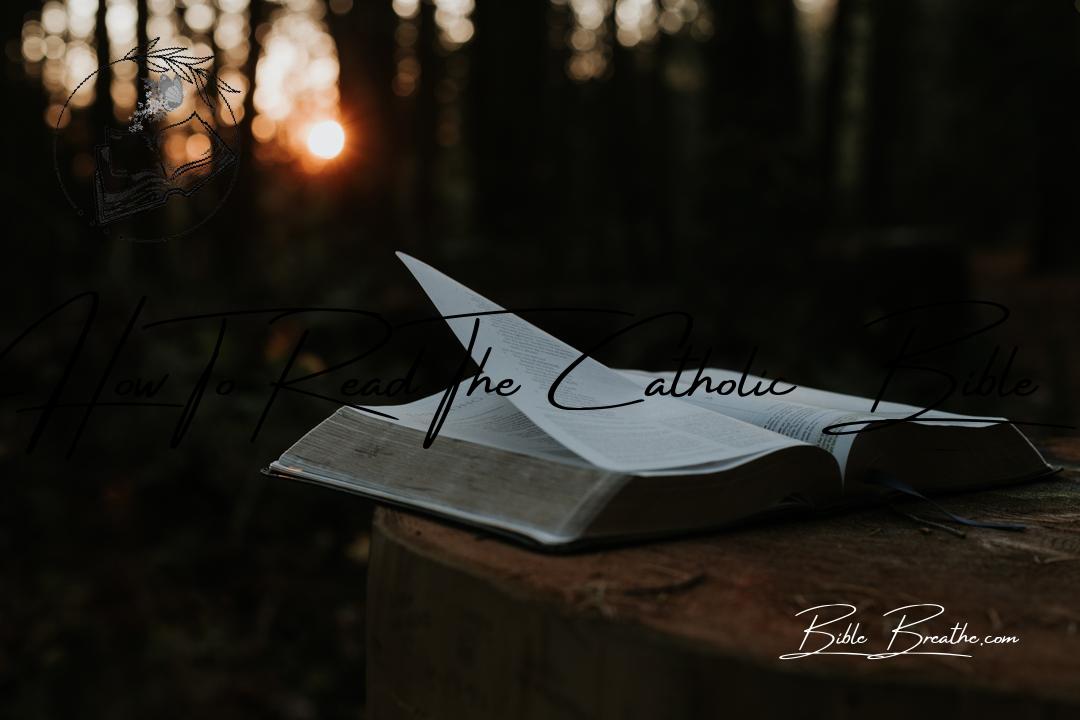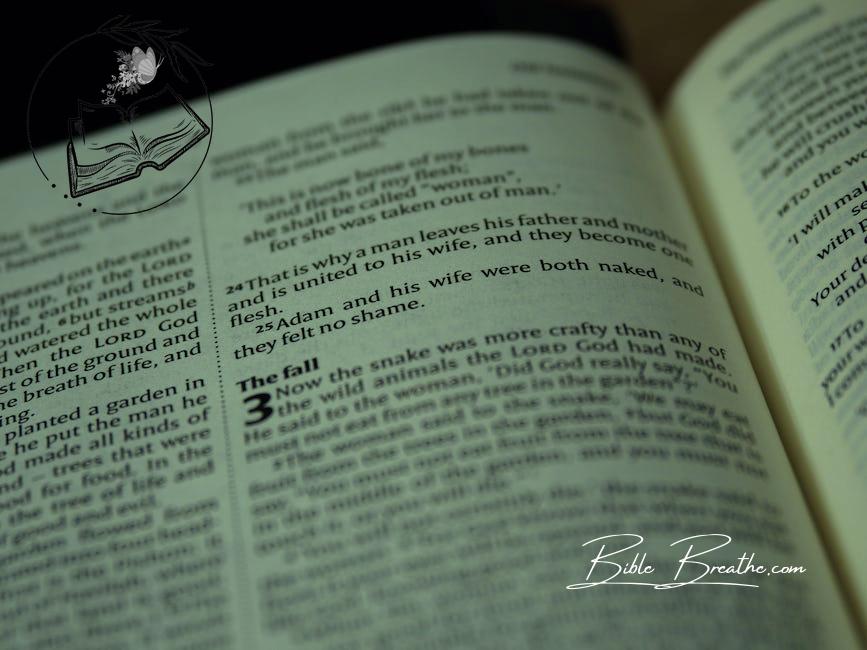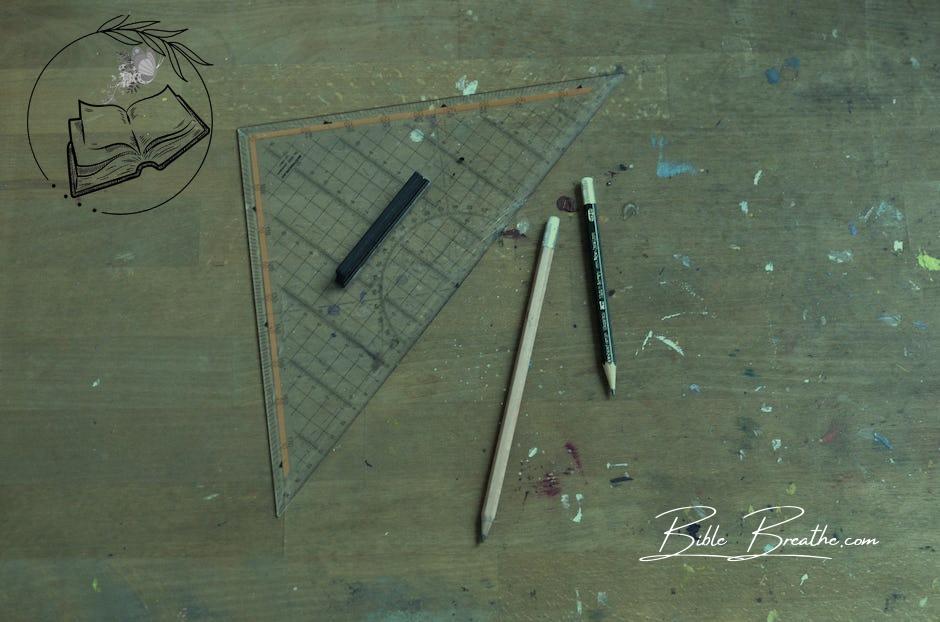How to Read the Catholic Bible, family, is like embarking on a road trip, but instead of just a destination, it’s a journey for your soul.
You see, for us Catholics, the Bible ain’t just another book; it’s the heartbeat of our faith, the GPS for our spiritual walk.
Picture it this way: the Catholic Bible is a rich tapestry, a mixtape of the Old Testament and the New Testament, all wrapped up in the embrace of Living Tradition.
It’s not about skimming the surface; it’s about diving deep into these Scriptures like a treasure hunt.
We’re talking about more than just reading; it’s like a spiritual adventure, a quest to understand the teachings of the Apostles, Prophets, and the Gospel.
Think of it as exploring a vast library, where every page whispers divine truths and mysteries.
As you flip through its pages, you’ll find a roadmap to Evangelization, and it’s not just words; it’s an invitation to dive into the mysteries of the sacraments and prayer, to kindle your faith, and to lift your worship to new heights.
But remember, you’re not alone on this journey.
The wisdom of generations, the insights of Bible commentaries, they’re like your travel companions, helping you navigate the Ministry, Disciples, Resurrection, and Parables.
It’s not just history; it’s a guide for your daily walk with God.
So, let’s embrace this adventure, where the Catholic Bible is more than a book; it’s the key to revelation, salvation, and a deeper connection with the Divine.
It’s time to hit the road and explore the truths it holds.
Are you ready for this spiritual journey?
🚗📖🙏
Key Takeaways
-
The Catholic Bible is a foundational tool for Catholics worldwide. Comprising the Old and New Testaments, it contains sacred scriptures that guide Catholic faith, doctrine, and practice. Reading it is a vital aspect of Catholic spirituality.
-
Understanding, interpreting, and sharing the Catholic Bible are essential steps in effectively engaging with its teachings. Catholics are encouraged to seek guidance from the Church’s rich tradition of biblical scholarship, including commentaries and interpretations provided by theologians and clergy.
-
The Catholic Church places great emphasis on interpreting the Bible in light of tradition and the teachings of the Magisterium (the Church’s teaching authority). This ensures that Catholic interpretation remains in alignment with the Church’s doctrines and beliefs.
-
Reading the Catholic Bible is a personal and communal experience. Catholics are encouraged to engage in daily reading and reflection on scripture. The Church also promotes the use of Lectionaries, which provide specific readings for Mass, enabling Catholics to follow a structured reading plan.
-
Community plays a vital role in enriching the Bible reading experience for Catholics. Group Bible studies, prayer groups, and discussions with fellow believers provide opportunities for collective reflection, sharing insights, and deepening understanding of the Word of God.
-
The Catholic Bible is more than a book; it is a living testament to faith and a guide for living a life in accordance with Catholic teachings. Engaging with the Bible in a prayerful, thoughtful, and communal manner can help Catholics draw closer to God and deepen their understanding of their faith.
Navigating the Catholic Bible: Your Path to a Deeper Connection with God
Photo modified by BibleBreathe.com. Original photo by John-Mark Smith on Pexels
Hey there, seeker of truth!
You might be wondering, “How do I dive into the Catholic Bible and find that deeper connection with God?” Well, my friend, you’re in the right place because we’re about to unlock the treasure chest of wisdom that is the Catholic Bible.
The Catholic Bible: A Guiding Light
In the words of Psalm 119:105 (KJV), “Thy word is a lamp unto my feet, and a light unto my path.” The Catholic Church holds the Bible close to its heart.
It’s not just a book; it’s a beacon guiding the faithful toward a profound connection with God.
The Bible in the Heart of Catholic Worship
You see, in the Catholic Church, the Bible isn’t a solo act.
It’s a star performer in the grand orchestra of communal worship and prayer.
It’s woven into the very fabric of the Church’s teachings, traditions, and liturgical practices.
When you crack open the Catholic Bible, you’re tapping into centuries of spiritual wisdom and insight.
Strengthening Your Faith through Scripture
Think of the Catholic Bible as a personal letter from God, written just for you.
It’s like a divine GPS, showing you the way to righteousness.
As you read and reflect on its pages, your faith gets a boost, and you start hearing God’s voice more clearly.
In the words of Romans 10:17 (KJV), “So then faith cometh by hearing, and hearing by the word of God.” The Catholic Bible is a bridge between the teachings of the Apostles, the wisdom of the Prophets, and the message of Jesus Christ.
It’s a treasure trove of truth.
Embarking on a Journey of Faith and Wisdom
When you dive into the Catholic Bible, you’re not just reading words; you’re stepping into a journey.
It’s an invitation to explore God’s living Word, to embrace the promise of salvation, and to cultivate a personal relationship with the Divine through prayer and reflection.
So, my friend, grab that Catholic Bible, start reading, and let it be your guiding star on your journey of faith and wisdom.
It’s not just a book; it’s a pathway to communion with God.
Exploring the Catholic Bible: Your Roadmap to Divine Wisdom
Photo modified by BibleBreathe.com. Original photo by Gustavo Fring on Pexels
Hey there, fellow travelers on the path of faith!
Today, we’re setting out on a journey to unlock the treasures of the Catholic Bible, especially for those of you who are cracking it open for the very first time.
Catholic Bible 101: Old and New Testaments
When you pick up a Catholic Bible, you’re holding a book with two major sections: the Old Testament and the New Testament.
The Old Testament is like the backstory, shared by both Christians and Jews.
It’s filled with ancient gems like Genesis, Psalms, and Isaiah.
On the flip side, the New Testament is all about the Christian story, featuring the Gospels (Matthew, Mark, Luke, and John), the Acts of the Apostles, and the Epistles (letters from early Christian leaders).
Decoding the Term “Testament”
Now, what’s up with this word “Testament”?
Well, it’s not your everyday term.
In this context, it’s all about covenants, those solemn agreements or contracts.
It’s like the divine handshake between God and humanity.
The Old Testament shines a spotlight on God’s covenant with the people of Israel, while the New Testament reveals the fresh covenant that Jesus Christ brought to the table.
Spotting the Differences
Let’s break it down further.
The Old Testament lays out the ancient deal between God and the Israelites.
It’s like the rulebook, filled with laws, prophecies, and the history of the Israelite crew.
It’s the setup for the grand entrance of the Messiah, basically predicting the arrival of Jesus Christ.
Now, the New Testament flips the script.
It’s all about the life, teachings, death, and resurrection of Jesus Christ.
Think of it as the biography section.
You’ll find the Gospels, which spill the beans on Jesus’ life and ministry, and the Acts of the Apostles, which tell the tale of the early Christian Church.
Plus, there are those letters (Epistles) to the early Christian gang and the prophetic book of Revelation.
Understanding these building blocks is like having a GPS for your Catholic Bible adventure.
It helps you navigate with purpose and clarity.
So, dive right in, and let’s uncover the captivating narrative, timeless wisdom, and divine truths that await you between these pages.
It’s a journey that’ll enrich your faith and deepen your understanding of God’s boundless love for us.
Unwrapping the Treasures of the Old Testament
Photo modified by BibleBreathe.com. Original photo by Brett Jordan on Pexels
Hey there, fellow explorer of faith!
If you’re wondering how to navigate the Old Testament, that ancient wellspring of wisdom, you’re in for an exciting journey.
Let’s unravel the rich tapestry of the Old Testament together and discover the jewels hidden within its four sections: law, history, poetry, and prophets.
A Peek into the Four Sections
- Law (Torah or Pentateuch):
Imagine this as the foundation stones of faith—Genesis, Exodus, Leviticus, Numbers, and Deuteronomy.
These books unveil the mysteries of creation, the covenant with Abraham, the Exodus from Egypt, and the divine delivery of the Law at Mount Sinai.
- History:
Think of this as a vivid historical documentary.
It narrates the Israelites’ journey through time, from conquering Canaan to the rise of kingdoms, the kingdom’s division, and their eventual exile.
You’ll meet heroes and heroines in books like Joshua, Judges, Ruth, Samuel, Kings, Chronicles, Ezra, Nehemiah, and Esther.
- Poetry:
Ah, the poetic heart of the Old Testament!
This section bursts with lyrical expressions of faith, longing, and praise.
It’s home to Job, Psalms, Proverbs, Ecclesiastes, and the romantic Song of Solomon (Song of Songs).
Psalms, in particular, is like a wellspring of prayers and hymns—a central part of Catholic worship.
- Prophets:
Meet the messengers of God, divided into major prophets (Isaiah, Jeremiah, Ezekiel, Daniel) and minor prophets (Hosea to Malachi).
These books contain the words and visions of those chosen by God to guide and admonish His people.
Unveiling the Significance of Key Books
- Genesis:
This is where it all begins, from creation to the fall of humanity and the covenant with Abraham.
It’s like the roots of a mighty tree, connecting Jews, Christians, and Muslims in faith.
-
Exodus:
It’s the epic tale of liberation, from slavery in Egypt to the journey through the wilderness, culminating in the awe-inspiring moment of the Ten Commandments. -
Psalms:
Think of it as a treasure chest of emotions and prayers, reflecting the highs and lows of human experience.
No wonder it’s a cornerstone of Catholic worship.
- Isaiah:
A major prophet with a major impact.
Isaiah’s words offer comfort, hope, and a glimpse of the Messiah.
It’s no surprise that his writings influenced the Gospel writers and early Christian beliefs.
Delving into the Old Testament isn’t just reading words on a page; it’s like digging into the very roots of faith.
It’s where history, morals, and spirituality converge, providing the essential backdrop to understanding the New Testament and the teachings of Jesus Christ.
Each book is a unique thread in the tapestry of divine revelation, and together, they weave a masterpiece of faith.
So, open those pages and let the adventure begin!
Uncovering New Testament Gems: Your Spiritual Map
Photo modified by BibleBreathe.com. Original photo by Maurijn Pach on Pexels
Hold onto your hats, folks!
We’re about to dive deep into the New Testament, a treasure trove of spiritual wisdom and Christian teachings.
This is where the rubber meets the road in your faith journey.
Let’s break it down into four lanes: the Gospels, history, letters, and prophecy, and explore some of the star books that light up the Christian faith.
Four Stops on Our Journey
- The Gospels:
Imagine this as the heart of the New Testament.
It’s all about Jesus – His life, teachings, death, and resurrection.
We’ve got Matthew, Mark, Luke, and John, each offering a unique window into the incredible story of Jesus.
- History:
Now, buckle up for the historical adventure in the Acts of the Apostles.
This is where we get a front-row seat to the early Christian Church’s journey.
It’s like the Christian expansion saga post-Jesus.
- Letters (Epistles):
These are like letters from your wise grandparents but written by early Christian leaders.
They’re packed with guidance, teachings, and encouragement for different Christian groups.
Books like Romans, Corinthians, and Galatians are in this category.
- Prophecy (Revelation):
If you’re into apocalyptic visions and the ultimate showdown of good versus evil, you’ve got the Book of Revelation.
It’s like a spiritual blockbuster, attributed to John.
Our Top Picks and Why They Matter
- Matthew:
Think of this as your GPS to Old Testament prophecies coming to life through Jesus.
It’s like Jesus’ greatest hits and the famous Sermon on the Mount.
- Mark:
Mark’s Gospel is like a fast-paced action movie with Jesus as the hero.
It’s all about miracles and Jesus’ servant-leader style.
- Luke:
Luke has the heart for the underdogs.
It’s the Gospel of compassion, highlighting Jesus’ love for the marginalized, women, the poor, and outcasts.
- John:
This is the deep dive into Jesus’ divinity.
John unveils Jesus as the eternal Word of God, the true light, and the key to eternal life.
-
Acts of the Apostles:
This one’s the sequel to the Gospels, chronicling the adventures of the apostles as they spread Christianity like wildfire. -
Romans:
It’s like Christian doctrine 101.
Romans explains big ideas like justification by faith and God’s righteousness in plain terms.
- 1 Corinthians:
Ever had questions about how to live the Christian life?
1 Corinthians tackles issues within the Corinthian Christian community, giving practical guidance.
- Revelation:
Last but definitely not least, Revelation takes us on an epic journey into the end times and the ultimate victory of Christ over all things dark and scary.
It’s like a big, bold reminder of hope for believers.
So, as you journey through the New Testament, think of it as your roadmap for Christian beliefs and practices.
It’s the foundation of our faith, the teachings of Jesus Christ, and it’s here to guide you on the path to spiritual growth, understanding, and salvation.
Let’s hit the road together!
Embracing the Living Tradition: Where Scripture Comes to Life
Photo modified by BibleBreathe.com. Original photo by Genaro Servín on Pexels
Hey there, fellow traveler on the path of faith!
When it comes to reading the Catholic Bible, it’s not just about flipping pages—it’s about diving into a dynamic river of tradition that’s been flowing through the ages.
Let’s explore how Scripture and Living Tradition dance together in the Catholic faith.
The Rich Blend of Scripture and Oral Tradition
In the words of 2 Thessalonians 2:15 (KJV), “Therefore, brethren, stand fast, and hold the traditions which ye have been taught, whether by word, or our epistle.” In Catholicism, we embrace a two-fold revelation: the Bible and oral teachings.
The Bible, with its Old and New Testaments, is God’s written word, but it’s not the whole story.
Oral tradition, passed down from the apostles and early Christian communities, is just as essential.
The teachings of Jesus and the apostles started as spoken words and were later inked onto the pages of Scripture.
The Beauty of Community in Understanding the Tradition
Imagine a river, winding its way through the landscape, nurturing the ecosystem around it.
That’s what Living Tradition is like—it’s alive and flows through the Christian community.
It’s not just about reading the Bible; it’s about engaging with it within the Church.
This is where the teachings are discussed, interpreted, and applied to the challenges of today.
The Church, standing tall on the foundation of the apostles and their successors, plays a vital role in helping us grasp the deeper meanings of Scripture.
It ensures that the core of the teachings remains relevant across the ages.
“”But if I tarry long, that thou mayest know how thou oughtest to behave thyself in the house of God, which is the church of the living God, the pillar and ground of the truth.”” – 1 Timothy 3:15 (KJV)
Living Tradition is a group effort, where believers, under the Church’s guidance, dive into Scripture, pray, and discuss.
It’s a journey that never ends, an ongoing revelation of God’s divine plan for humanity.
We study it, understand it, and live it within the loving embrace of the Christian community.
So, when Catholics read the Bible, it’s not just about words on paper.
It’s about stepping into a vibrant tradition—a living narrative.
It’s an invitation to be part of something bigger, to engage with the Word within the context of our community, and to be guided by the Holy Spirit as we seek to understand and live out God’s timeless truths.
Cracking the Code of Catholic Bible Reading
Photo modified by BibleBreathe.com. Original photo by Vitaly Gorbachev on Pexels
Well, hello there, fellow explorer of the Catholic Bible!
You might be thinking, “Where do I even begin?” No worries, my friend, because on this journey, you’ve got company.
Reading the Catholic Bible is like walking through a well-lit forest in the darkest night – it’s all about having the right lantern to guide you.
Let’s dig into some practical tips for beginners to light up your path through the Scriptures.
Find Your Perfect Fit
Picture this: you’re shoe shopping.
You wouldn’t just grab any pair without checking if they fit, right?
Similarly, there are different versions of the Bible, each with its own style and language.
The Catholic Bible has some approved translations like the Revised Standard Version (RSV) or the New American Bible (NAB).
Choosing the right one is like finding those comfy shoes – it should feel right for you.
“Thy word is a lamp unto my feet, and a light unto my path.” – Psalm 119:105 (KJV)
Make It a Date
Life can be as bustling as a city square, but setting aside a specific time for Bible reading is crucial.
Whether it’s sipping your morning coffee or winding down before bed, consistency is key.
Treat it like a date with a dear friend, and soon, it’ll become a cherished habit.
Know Your Why
Ever gone grocery shopping without a list?
It can be overwhelming, right?
Before you dive into the Bible, ask yourself, “What do I want from this reading?” Are you looking for wisdom, comfort, or guidance?
Having a clear intention helps you focus and connect with the text.
Pray Before You Play
Think of prayer as your trusty GPS on this biblical adventure.
Before you start reading, take a moment to pray.
Ask for understanding, insight, and an open heart.
It’s like getting a tour guide before exploring a new city – you’ll see things you might have otherwise missed.
Context Is Key
Imagine picking up a book and starting from the middle – it’s confusing, right?
The Bible is no different.
To truly get its message, you need to understand the historical and cultural context of the passages.
Don’t hesitate to use Catholic teachings, Bible commentaries, and resources to aid your understanding.
Reflect and Savor
After a hearty meal, we often savor the flavors and how it nourished us.
Similarly, after reading a passage from the Catholic Bible, take a moment to reflect on its meaning.
How does it relate to your life?
What lessons can you draw from it?
This reflection is where the Scripture truly comes alive.
As you set sail on your Catholic Bible adventure, keep these tips close, like cherished verses.
They’ll be your compass through the profound and enlightening world of Scripture.
Remember, it’s not about speed; it’s about the depth of your exploration.
So, what are you waiting for?
Crack open that Bible, let its wisdom flow, and watch your faith grow with each page turned.
Happy reading!
Equipping Yourself for the Catholic Bible Adventure
Photo modified by BibleBreathe.com. Original photo by Skylar Kang on Pexels
Hey there, fellow traveler of the Catholic Bible!
You’re about to embark on a fantastic journey, and just like any grand adventure, you’ll need some trusty tools to navigate these sacred waters.
Think of it as setting sail with your compass and map – in this case, your companions on this biblical quest.
Unveiling the Power of Bible Commentaries and Annotations
Ever wished you had a friend to help unravel the mysteries of a book?
Well, that’s exactly what Bible commentaries and annotations do.
They’re like having a wise companion who sheds light on the tricky parts.
Dive into the Old Testament, the New Testament, or any scripture, and these resources will be your guiding stars.
“”For by wise counsel thou shalt make thy war: and in multitude of counsellors there is safety.”” – Proverbs 24:6 (KJV)
The Magic of Bible Dictionaries
Imagine yourself in a foreign land – you’d want a dictionary to understand the local language, right?
Well, in the realm of the Catholic Bible, Bible dictionaries are your linguistic guides.
They help you decode unfamiliar terms, places, and concepts.
So, when you stumble upon words like “”covenant”” or “”revelation,”” a Bible dictionary becomes your key to comprehension.
Unlocking Passages through Catholic Teachings and Traditions
The Catholic Bible isn’t just a collection of stories; it’s deeply intertwined with centuries of tradition and teachings.
To truly grasp the essence of the text, immerse yourself in the rich treasure trove of Catholic teachings and traditions.
Consider how passages connect to the sacraments, prayer, faith, and worship.
It’s like finding hidden treasures in a vast chest of riches.
“”And he took bread, and gave thanks, and brake it, and gave unto them, saying, This is my body which is given for you: this do in remembrance of me.”” – Luke 22:19 (KJV)
As you journey through the Catholic Bible, these tools will be your faithful companions, like the gear of an intrepid explorer.
Bible commentaries, dictionaries, and a deep understanding of Catholic teachings will be your compass, guiding you through the intricate passages and profound wisdom of Scripture.
So, put on your explorer’s hat, grab your trusted tools, and set forth on this marvelous expedition through the Catholic Bible.
As you navigate its depths, may your faith grow stronger, and may your understanding deepen with each verse you encounter.
The Beauty of Reading Together: Strengthening Your Catholic Bible Adventure
Photo modified by BibleBreathe.com. Original photo by Monstera Production on Pexels
Reading the Catholic Bible is like a solo hike in the mountains—profound and personal.
But there’s something magical about gathering with others on this spiritual journey.
It’s like a road trip with friends where the ride becomes richer, and the discoveries more exciting.
Let’s dive into the wonders of communal reading.
Building a Faithful Community
Picture this: you’re constructing a magnificent cathedral.
Each person is like a brick, contributing to the towering structure of a spiritual community.
When you engage in communal Bible reading, you’re adding your brick to this ever-growing cathedral of faith.
It strengthens your bonds, creating a sense of unity and belonging.
“For where two or three are gathered together in my name, there am I in the midst of them.” – Matthew 18:20 (KJV)
Embracing Diverse Perspectives
Every person is a unique stained glass window in this grand cathedral.
Communal reading lets you see Scripture through different lenses.
People bring their life experiences, insights, and perspectives, enriching your understanding of God’s Word.
Walking in Harmony
Think of the Bible as a trusty compass guiding your life’s journey.
In a group, you can make sure you’re all heading in the same direction.
Discussing interpretations and applications of Scripture helps everyone stay aligned with the teachings and principles of the Catholic faith.
Sharing Faith Stories
Your faith journey is like a beautiful melody waiting to be heard.
In a communal setting, you can open up about your experiences and listen to others’ stories.
These shared moments of vulnerability and inspiration can be a wellspring of encouragement.
“Iron sharpeneth iron; so a man sharpeneth the countenance of his friend.” – Proverbs 27:17 (KJV)
Staying Accountable
Imagine hiking with friends, all determined to reach the summit together.
The collective commitment keeps you accountable.
In communal Bible reading, you’re not just accountable to yourself; you’re part of a group striving for spiritual growth.
This shared responsibility nurtures discipline and dedication.
As you embark on this communal journey through the Catholic Bible, remember, you’re not alone.
You’re part of a vibrant, faith-filled community.
Embrace the diversity of perspectives, share your faith experiences, and let the collective wisdom of your fellow travelers inspire and guide you.
So, gather your fellow pilgrims, open the Scriptures, and let the communal reading of the Catholic Bible be a wellspring of strength, unity, and profound spiritual growth.
Together, you’ll uncover treasures beyond imagination.
Charting Your Course Through the Catholic Bible
Photo modified by BibleBreathe.com. Original photo by Andrea Piacquadio on Pexels
Ahoy there, fellow adventurer in the world of the Catholic Bible!
Reading this sacred text is like embarking on a grand voyage, and just like planning a trip, the order in which you tackle the Scriptures can add a unique flavor to your journey.
It’s like crafting your own itinerary for an awe-inspiring exploration.
Let’s dive into the age-old debate on reading order and the joys of non-sequential exploration.
The Great Debate: Chronological or Not?
Picture this: you’re watching an enthralling movie, but the scenes are all jumbled up.
It’s intriguing, sure, but it can also be a tad confusing.
That’s somewhat similar to the debate about reading the Bible in chronological order.
Some argue that starting from Genesis and moving methodically through Revelation provides a sense of historical context.
It’s like following a timeline in a historical documentary.
But here’s the twist: the Bible isn’t your typical narrative.
It’s a fascinating mix of diverse books, poetry, prophecies, and letters.
So, beginning from the very start might lead you to complex passages, which could be a bit overwhelming, especially for newcomers.
Embracing the Freedom of Non-Sequential Reading
Now, envision this: you’re strolling through an art gallery, but instead of following a predetermined path, you wander freely, drawn to the paintings that speak to your soul.
Non-sequential reading of the Bible is a lot like this artistic journey.
It allows you to explore themes, stories, and teachings that resonate with your current interests and needs.
“”Thy word is a lamp unto my feet, and a light unto my path.”” – Psalm 119:105 (KJV)
By opting for non-sequential reading, you can dive into subjects like faith, prayer, or the Apostles’ teachings, no matter where they appear in the Bible.
It’s like customizing your voyage to match your spiritual compass at any given moment.
This approach keeps your engagement with the Bible fresh and invigorating.
It empowers you to develop a deep understanding of specific themes and teachings, which you can then apply to your daily life.
In the end, the order in which you read the Catholic Bible is a personal choice, like choosing your path on a spiritual journey.
Whether you go with chronological reading or the freedom of non-sequential exploration, the key is to remain committed and open to the wisdom it imparts.
As you navigate this sacred text, may you discover inspiration, guidance, and a profound connection with your faith.
Safe travels, my friend!
How to Navigate the Catholic Bible Like a Pro: Choosing Your Path (250 Words)
Photo modified by BibleBreathe.com. Original photo by cottonbro studio on Pexels
Hey there, fam!
I know you’re excited to dive into the Catholic Bible, and you’re standing at a bit of a crossroads, wondering, “Where do I even start?” It’s like deciding which road to take on a grand adventure.
Let’s break this down together, so it’s crystal clear.
The Great Debate: Chronological or Not?
Okay, here’s the deal: Some say you should start at the very beginning, just like reading a novel from page one to the very end.
It’s like watching a movie from the opening credits to the closing scene.
You get the whole story in historical order, from Genesis to Revelation.
But hey, think about this – when you’re watching an epic movie, do you always start from the first scene?
Or do you sometimes skip to the most exciting part to get a taste of the action?
That’s how some folks tackle the Bible.
The Benefits of Non-Sequential Reading
Now, picture this: You start with the New Testament.
It’s like meeting a new friend who’s got some amazing wisdom to share.
You’ll dive into the Gospels, where Jesus drops truth bombs that apply directly to your life.
It’s like having a GPS for your soul, helping you navigate life’s twists and turns.
And then, after you’ve soaked up that wisdom, you can venture into the Old Testament.
It’s like understanding the backstory of your favorite movie character.
You’ll discover the roots of your faith, the epic history of the Hebrew people, and the incredible insights of the prophets.
It’s like getting the full picture, making the New Testament even more powerful.
So, whether you choose to go chronological or not, remember this: the Catholic Bible isn’t just a book.
It’s a treasure chest of wisdom, guidance, and inspiration.
It’s like a roadmap for your life, a GPS for your soul, and a conversation between you and the Almighty.
“Thy word is a lamp unto my feet, and a light unto my path.” – Psalm 119:105 (KJV) 🙌📖
Frequently Asked Questions (FAQs) About How To Read The Catholic Bible
What are the main differences between the Catholic Bible and other versions?
The main difference is the inclusion of additional books, known as the Deuterocanonical books, in the Catholic Bible.
These books, like Tobit and Maccabees, are not present in Protestant Bibles.
This distinction arises from historical disagreements during the Reformation about which books should be considered part of the canon.
How can beginners start reading the Bible effectively?
Beginners can start reading the Bible effectively by choosing a suitable version, setting a reading plan, taking notes, and seeking guidance from more experienced readers or religious leaders.
It’s essential to approach it with an open heart and a desire to learn.
Why is communal reading encouraged in the Catholic tradition?
Communal reading fosters unity, enhances understanding, and strengthens faith among Catholics.
It encourages shared reflection, mutual understanding, and community growth through discussing and interpreting Scripture together, allowing for varied perspectives and communal insights into God’s teachings.











